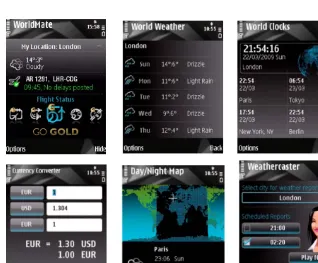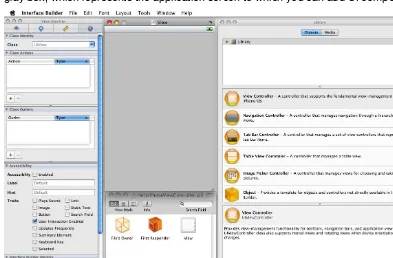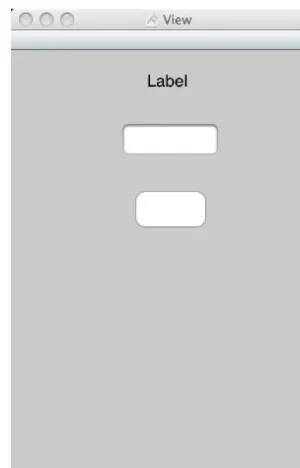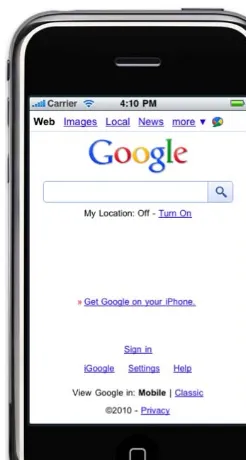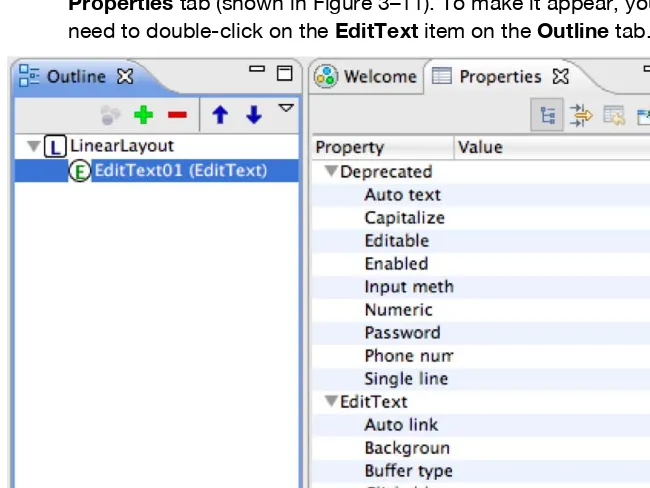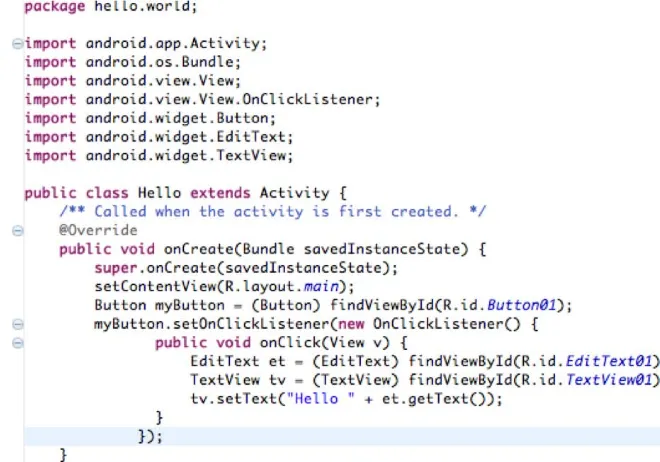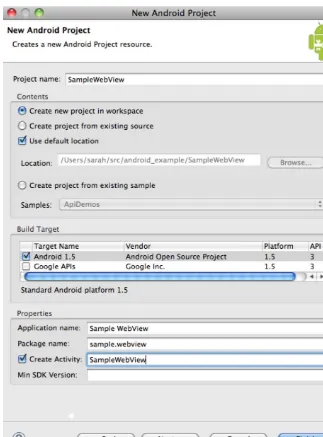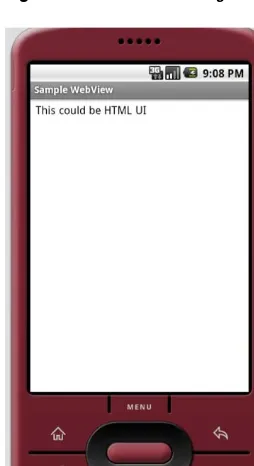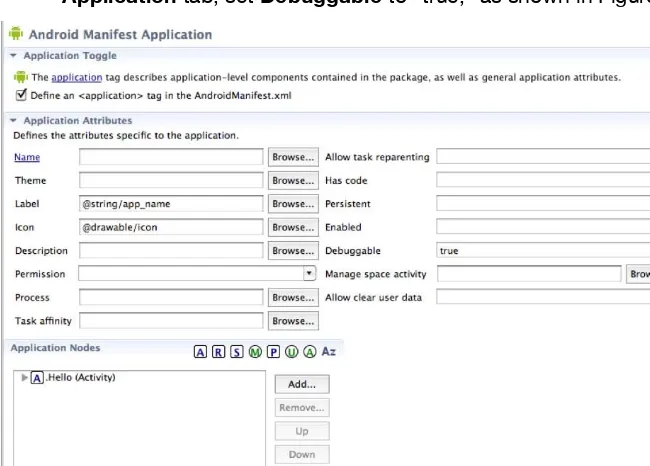Sarah Allen |
Vidal Graupera |
Lee Lundrigan
Developing and distributing applications for iPhone, BlackBerry
and other smartphone devices
Pro
Smartphone Cross-Platform
Development
Pro Smartphone
Cross-Platform Development
iPhone, BlackBerry, Windows Mobile, and
Android Development and Distribution
■ ■ ■
Copyright © 2010 by Sarah Allen, Vidal Graupera, Lee Lundrigan
All rights reserved. No part of this work may be reproduced or transmitted in any form or by any means, electronic or mechanical, including photocopying, recording, or by any information storage or retrieval system, without the prior written permission of the copyright owner and the publisher.
ISBN-13 (pbk): 978-1-4302-2868-4 ISBN-13 (electronic): 978-1-4302-2869-1
Printed and bound in the United States of America 9 8 7 6 5 4 3 2 1
Trademarked names, logos, and images may appear in this book. Rather than use a trademark symbol with every occurrence of a trademarked name, logo, or image we use the names, logos, and images only in an editorial fashion and to the benefit of the trademark owner, with no intention of infringement of the trademark.
The use in this publication of trade names, trademarks, service marks, and similar terms, even if they are not identified as such, is not to be taken as an expression of opinion as to whether or not they are subject to proprietary rights.
President and Publisher: Paul Manning Lead Editor: Mark Beckner, Ewan Buckingham Technical Reviewer: Fabio Claudio Ferracchiati
Editorial Board: Clay Andres, Steve Anglin, Mark Beckner, Ewan Buckingham, Gary Cornell, Jonathan Gennick, Jonathan Hassell, Michelle Lowman, Matthew Moodie, Duncan Parkes, Jeffrey Pepper, Frank Pohlmann, Douglas Pundick, Ben Renow-Clarke, Dominic Shakeshaft, Matt Wade, Tom Welsh
Coordinating Editor: Jim Markham Copy Editor: Ralph Moore
Compositor: MacPS, LLC
Indexer: BIM Indexing & Proofreading Services Artist: April Milne
Cover Designer: Anna Ishchenko
Distributed to the book trade worldwide by Springer Science+Business Media, LLC., 233 Spring Street, 6th Floor, New York, NY 10013. Phone 1-800-SPRINGER, fax (201) 348-4505, e-mail [email protected], or visit www.springeronline.com.
For information on translations, please e-mail [email protected], or visit www.apress.com. Apress and friends of ED books may be purchased in bulk for academic, corporate, or promotional use. eBook versions and licenses are also available for most titles. For more information, reference our Special Bulk Sales–eBook Licensing web page at
www.apress.com/info/bulksales.
The information in this book is distributed on an “as is” basis, without warranty. Although every precaution has been taken in the preparation of this work, neither the author(s) nor Apress shall have any liability to any person or entity with respect to any loss or damage caused or alleged to be caused directly or indirectly by the information contained in this work.
To my loving wife, Tara, and my children Maggie, Grace, James, and Kathleen.
Contents at a Glance
■
Contents ... v
■
Foreword ... x
■
About the Authors ... xii
■
About the Technical Reviewer... xiii
■
Acknowledgments...xiv
■
Introduction...xv
■
Chapter 1: The Smartphone is the New PC... 1
Part 1: Platform Development and Distribution... 15
■
Chapter 2: iPhone ... 17
■
Chapter 3: Android ... 35
■
Chapter 4: BlackBerry ... 51
■
Chapter 5: Windows Mobile... 65
Part 2: Cross-Platform Native Frameworks... 81
■
Chapter 6: Rhodes ... 83
■
Chapter 7: RhoSync ... 113
■
Chapter 8: PhoneGap ... 131
■
Chapter 9: Titanium Mobile ... 153
Part 3: HTML Interfaces ... 161
■
Chapter 10: Mobile HTML and CSS ... 163
■
Chapter 11: iWebKit... 183
■
Chapter 12: Animated UI with jQTouch... 207
■
Chapter 13: Sencha Touch... 225
■
Chapter 14: BlackBerry HTML UI ... 235
■
Appendix: Cascading Style Sheets ... 247
Contents
■
Contents at a Glance... iv
■
Foreword ... x
■
About the Authors ... xii
■
About the Technical Reviewer... xiii
■
Acknowledgments...xiv
■
Introduction...xv
■
Chapter 1: The Smartphone is the New PC... 1
Application Marketplace ...2
Increase in Mobile Usage and Trend Toward Smartphones ...2
What is a Smartphone?...4
Smartphone Landscape ...4
Cross-Platform Frameworks...5
The Branded Experience of Mobile Applications ...6
Web Techniques ...10
Cross-Platform Frameworks...10
About this Book...13
Part 1: Platform Development and Distribution... 15
■
Chapter 2: iPhone ... 17
Introducing Xcode ...17
iPhone Development Standard Practices...18
Building a Simple iPhone app ...18
Create the Xcode Project ...19
Create the Interface ...20
Installing the App on the Device ...29
Finding Your Device ID...31
Create the Provisioning Profile ...32
Install the Provisioning Profile ...32
■
Chapter 3: Android ... 35
Android Development...36
Setting Up The Development Environment With Eclipse...36
Building a Simple Android Application...39
Simple Application Using Android WebView ...46
Building for an Android Device ...48
Distribution on the Web ...50
Android Market ...50
■
Chapter 4: BlackBerry ... 51
BlackBerry Platform...51
Set Up for Classic Java Development ...52
Building a Simple BlackBerry Application...53
Create the Eclipse Project...53
Create the Interface ...55
Code Explained ...57
Build and Test the Application ...58
Simple User Interface Application Using a Label, Text Field, and Button ...58
Code Explained ...60
Simple Application Using BlackBerry Browser Field...61
■
Chapter 5: Windows Mobile... 65
Setting Up for Windows Mobile 6.5 Development...66
Building a Simple Windows Mobile App ...67
Creating a Smart Device Project ...67
Setting Up Base Functionality...68
Deploying and Test your Application ...72
Fleshing Out the Application ...73
Packaging and Distributing Your App ...76
Adding a CAB Project to the Solution...77
Customizing Your Product Name ...77
Adding the Application to the CAB Project ...78
Creating an Application Shortcut ...78
Adding a Registry Entry ...78
Building and Deploying the CAB File...78
Installing the CAB File ...79
Distributing Your Application ...80
Part 2: Cross-Platform Native Frameworks... 81
■
Chapter 6: Rhodes ... 83
Development Architecture ...84
Runtime Architecture ...85
Device Capabilities and Native UI Elements ...86
Database (Rhom) ...86
Threading...87
Differences Between Rhodes and Rails ...88
Creating a Rhodes App ...88
Installation and Setup ...88
Running the Application...91
Running on the iPhone...93
Running on Android ...94
Running on BlackBerry ...94
Running on Windows Mobile 6 ...95
Generating a Model...95
How the Sync Server Works ...114
Data Storage: Why Triples? ...114
RhoSync Source Adapters ...115
Initialize ...116
Authenticating with Web Services: Login and Logoff ...116
Retrieving Data: Query and Sync ...117
Query ...117
Sync ...119
Submitting Data: Create, Update, and Delete ...119
Create ...119
Update...120
Delete...120
User Authentication ...121
Product Inventory Example ...122
Creating Your Application on RhoHub ...122
Creating Your Application on a Local RhoSync Server...127
Debugging RhoSync Source Adapters ...130
Testing Your Application ...130
Writing Hello World in PhoneGap ...139
Writing a PhoneGap Application...141
Contacts Example ...146
Contact Example Code Explained ...149
Camera Example...150
■
Chapter 9: Titanium Mobile ... 153
Part 3: HTML Interfaces ... 161
■
Chapter 10: Mobile HTML and CSS ... 163
Platform Overview ...163
iOS for iPhone, iPad, iPod Touch...164
Android ...164
■
Chapter 11: iWebKit... 183
Working With the iWebKit Framework ...184
A Few Words of Caution...185
Required Header ...186
Body ...186
Organizing Data with Lists ...187
Navigation...194
Forms...196
Landscape Mode...200
Phone Integration...200
Integrating iWebKit in Mobile Applications ...201
Creating a Native iPhone Application with iWebKit in Objective C...201
Create an Application...203
Add iWebKit Framework to Application Layout Template...204
Setting up PhoneGap for iWebKit...205
■
Chapter 12: Animated UI with jQTouch... 207
Getting Started with jQTouch...208
Running Example Code ...208
Creating a Simple jQTouch Application...209
Adding Screens...211
Loading Additional Screens with Ajax...212
Other Buttons...215
jQTouch Initialization Options ...215
Basic Views...217
Customizing Your jQTouch Applications ...218
Animations ...218
Navigation Bar (aka the Toolbar) ...218
Customizing Your Views with Themes...221
Integration with Rhodes...222
Integration with PhoneGap ...222
■
Chapter 13: Sencha Touch... 225
Getting Started...225
Adding HTML Text with a Panel ...228
Adding Components...231
Creating Interactivity...232
■
Chapter 14: BlackBerry HTML UI ... 235
BlackBerry Browser UI Controls...236
BlackBerry 4.2 Browser Control...237
Fonts ...239
Frames...241
JavaScript ...241
Rhodes Tip for Dynamic Layout ...242
BlackBerry 4.6 Browser Control...244
Display and User Interaction...244
Development Environment...245
■
Appendix: Cascading Style Sheets ... 247
The Cascading in Style Sheets...247
CSS Syntax...248
Comments...249
Identifying Elements with ID and Class...249
Common Patterns ...250
Common CSS Attributes (Display: block verses inline) ...251
The year 2010 is an exciting time for those of us who have worked in and around the mobile industry since before the, now, decade-old 21st century. Some have referred to this year as “The Year of the Mobile Developer.” It’s true that, following the creation of frictionless paths to market through Apple’s App Store, Google’s Android Market, and the other handset or OS app stores, developers and brands alike are pursuing a market previously limited in reach. The options of distribution of applications until recently included carrier decks, handset portals, third-party channels such as Motricity, or even one’s own web site.
Carriers once dominated and controlled which applications were allowed to reach eager end users via their portals—picking winners and losers by the weight of their business development and testing processes. Distribution via carriers has been difficult and costly, requiring direct relationships with carriers. Each carrier required a new business development effort and a different set of requirements for OSes and handsets supported, along with a unique testing process. Handset portals also required major effort from business development and also required joining expensive developer programs. The third-party and web-site options for distribution were easier but required individual marketing effort by developers, and the process for users to install downloaded apps on their own was a barrier for widespread adoption. Until recently, these challenges in the business of mobile development limited experimentation and innovation by all but a few hardy souls or the largest brands with the budgets to support it. Enter Apple’s App Store.
The Apple App Store not only provided a path to market, but also, a dramatic change in marketing position for developers. Apple established the new industry standard with the “There’s an App for That” campaign. Suddenly, instead of choosing a device for its hardware specs, end users considered what they could do with a phone beyond make calls and send text messages. The value of a device, now, has become its ability to run lots of applications. The iPhone didn’t initially include an App Store. End users drove this innovation, as is often the case. Early adopters of the iPhone broke open the OS and began to extend it’s capabilities with apps, but Apple was quick enough to leverage the iTunes connection for delivering $.99 songs to delivering $.99 applications.
The app store trend didn’t and couldn’t have happened without the availability of more capable devices. Nokia punctuated the importance of a new class of handset commonly referred to as smartphones in 2007 by calling their advanced handsets “Multimedia Computers.” Smartphone as computers has become a more common analogy as smartphones grew in processing and storage capability. The steady increase of smartphone marketshare hit an inflection point in 2008 by crossing the magical 20% penetration rate in both the UK and the US. Historically, any technology mainstreams at the 20% penetration level, which has clearly been demonstrated by experience since 2008. According to Morgan Stanley analyst Mary Meeker, the rest of the world (ROW) will reach 20% smartphone penetration in 2012.
stages of technology evolution, but the timing is perfect for developers to add cross-platform frameworks to their tool box.
This is especially true for web developers and those serving brands that benefit most from the tradeoffs between wide distribution and deep integration.
In Part 1, the authors provide a survey of the top development and distribution options consisting of mainly handset and OS vendors including the iPhone, Android, BlackBerry, and Windows Mobile. Part 2 follows by introducing emerging cross-platform solutions covering both proprietary and open source frameworks with an emphasis on building native applications. And finally in Part 3, the authors address techniques for using HTML to create a native look-and-feel for web applications and services.
A key thread throughout the book is recognition that mobile development is a business endeavor and opportunity. There is a presentation of how-to instructions and code samples that will be useful to those just getting started with mobile development, but the audience that will benefit most from the pragmatic vision of the authors are professional developers and agencies. Certainly, many web developers are pursuing mobile development because it’s a good decision to grow their business and if their clients aren’t already requesting mobile applications, they will soon.
The book isn’t targeted at developers of gaming apps. While gaming is a leading category for all app stores, it’s one of those categories that benefits most from deep integration into the OS or device. Cross-platform frameworks aren’t likely to be the best solution for games. Productivity apps, branded apps, and some communications services such as social networking apps will benefit from using the tools and techniques covered in the book.
Several of the tools presented in the book are currently leading this emerging category. We are in the early days of cross-platform use on mobile devices. Of the estimated 17 million software developers worldwide, according to Motorola as quoted in Forbes, around 4 million of them are developing for mobile. While Rhodes, Appcelerator, and PhoneGap have been used to deliver applications via the Apple App Store, the total number of developers using these frameworks is in the low six figures. Like the early days of the web, and to some extent, still, experimentation is vital to moving the ecosystem forward. This book is an important contribution to that effort.
About the Authors
Sarah Allen leads Blazing Cloud, a San Francisco consulting firm that specializes in developing leading-edge mobile and web applications. She is also co-founder and CTO of Mightyverse, a mobile startup focused on helping people communicate across languages and cultures. In both technical and leadership roles, Sarah has been developing commercial software since 1990 when she co-founded CoSA (the Company of Science & Art), which originated After Effects. She began focusing on Internet software as an engineer on Macromedia's Shockwave team in 1995. She led the development of the Shockwave Multiuser Server, and later the Flash Media Server and Flash video. An industry veteran who has also worked at Adobe, Aldus, Apple, and Laszlo Systems, Sarah was named one of the top 25 women of the Web by SF WoW (San Francisco Women of the Web) in 1998.
Website: blazingcloud.net
Personal Blog: www.ultrasaurus.com Twitter: @ultrasaurus
Vidal Graupera has been developing award-winning mobile applications starting as far back as the Apple Newton in 1993. He founded and ran a successful software company that developed more than a dozen consumer applications on a variety of mobile platforms over a period of ten years. Vidal holds engineering degrees from Carnegie Melon University and the University of Southern CA, and an MBA from Santa Clara University. Vidal currently consults with clients on developing web and mobile applications.
Website: vdggroup.com
Personal Website: www.vidalgraupera.com Twitter: @vgraupera
Lee Lundrigan, a founding engineer at Blazing Cloud, develops mobile applications using cross-platfrom frameworks on four platforms and Objective-C on the iPhone and iPad. He is an expert in CSS and HTML and also has experience creating dynamic UI in JavaScript. He has developed cross-browser CSS and HTML to run on iPhone, Android, BlackBerry, and Windows Mobile.
About the Technical Reviewer
Acknowledgments
The authors received enthusiastic support from many of the creators of the software discussed herein. We would like to extend our thanks for technical review and enthusiastic support from the Rhomobile team: Adam Blum, Lars Burgess, Brian Moore, Evgeny Vovchenko, and Vladimir Tarasov; Brian LeRoux from Nitobi, David Richey and Jeff Haynie from Appcellerator; and Ed Spencer from Sencha. We also want to acknowledge Rupa Eichenberger’s significant contribution to early technical reviews; Nola Stowe for initial work on the Android chapter; and Sarah Mei for her work on Rhodes geolocation. Jim Oser, Bruce Allen, and David Temkin each had a
Introduction
Developing mobile applications can be tricky business. Mobile developers need to use platform-specific tools and APIs and write code in different languages on different platforms. It is often hard to understand what it takes to develop and distribute an application for a specific device without actually building one. Each platform has different processes and requirements for membership in developer programs and documentation for different parts of the development process are often scattered and hard to piece together. Therefore, we have divided the book into three main topics: Platform Development and Distribution, Cross-Platform Native Frameworks, and HTML Interfaces.
Part 1: Platform Development and Distribution
In Chapters 1–5, we provide an overview of four platforms: iOS, for building iPhone, iPad, and iPod Touch applications; the Android open source platform, created by Google; Research in Motion's BlackBerry platform; and Windows Mobile from Microsoft. Each chapter follows the same outline:
• Building a Simple Hello World • Running in the Simulator • Adding a Browser Control • Building for the Device
• Distribution Options and Requirements
This common outline allows for comparison across the operating systems and provides a feel for the patterns of the development process. If you decide to pursue native application
development using only the vendor SDK, you will need a lot more details than any single chapter can provide, but this should provide the right amount of information to kick-off some
experimentation or help make a decision about which platforms to pursue.
Part 2: Cross-Platform Native Frameworks
Chapters 6–9 provide an overview and examples of applications written in three popular native frameworks. In categorizing as a “native framework,” we selected software that allows a common development approach across platforms but that build to an application that is indistinguishable by a user from one built with native code (as described in Part 1). Note that to build using these frameworks, you will still need the vendor SDK described in Part 1 and use vendor-specific techniques for code signing and distributions.
There are two chapters on the Rhomobile platform, one for the client-side Rhodes and one for the RhoSync server framwork. Rhodes is covered in more depth than the other two platforms: Titanium Mobile and PhoneGap. Rhodes is at version 2 at this writing, Titanium v1.2 and PhoneGap 0.9. As with the rest of the book, these chapters are designed to provide a feel for what it is like to develop for each platform, to kick-start some experimentation, and aid in deciding what platform to spend more time with.
Part 3: HTML Interfaces
You can use the technique of adding a browser control in combination with the HTML and CSS patterns and frameworks presented in Chapters 10–14.
To develop a mobile application user interface, a mobile developer must typically learn a platform-specific language and SDK. This can become quite cumbersome if you need your application to run on more than one platform. Fortunately, there is an alternative; all smartphone platforms today include a browser control component (also known as a web view) that a
developer can embed in their application that will allow them to write some or all of their app in HTML, CSS, and JavaScript.
Chapter
The Smartphone
is the New PC
The mobile phone is the new personal computer. The desktop computer is not going away, but the smartphone market is growing fast. Phones are being used as computers by more people and for more purposes. Smartphones are generally cheaper than computers, more convenient because of their portability, and often more useful with the context provided by geolocation.
Already there are more mobile phones than computers connected to the Internet. While a minority of those phones would be considered smartphones, we’re seeing a fast-moving landscape where today’s high-end phones become next year’s mid-range or even low-end phones. With profits from applications growing, we’ll see continued subsidies of the hardware and operating systems by manufacturers and carriers, keeping new phones cheap or free.
We’re seeing a change in how people use computers. Desktop applications that we use most frequently are centered around communications, rather than the more traditional personal computer task of document creation. In the business world, we file expense reports, approve decisions, or comment on proposals. As consumers, we read reviews, send short notes to friends, and share photos. E-mail is the killer app of the late 20th century, not the word processor or spreadsheet. Both in the business world and in our personal lives, these communication-centered tasks translate effectively into mobile applications.
As smartphones gain widespread adoption, the desktop computer will be relegated to the specialist and elite professional, much as the mini-computer and supercomputer are today. Many of the routine tasks we currently perform on a desktop or laptop, we will be able to accomplish on a smartphone. More importantly, new applications will meet the needs of people who don’t use a computer today. Software development will shift toward mobile development as the majority of people who use computers will use them indirectly through a mobile phone. The center of gravity of the software industry will be mobilized.
Application Marketplace
In September 2009, Apple announced that more than two billion applications had been downloaded from its App Store. With more than 100,000 applications available, Apple has transformed the mobile phone market by dramatically increasing consumer spending on applications and successfully shifting independent developer mindshare toward mobile application development. By the end of 2009, Google Android’s open platform was reported to have over 20,000 apps in the Android Market online store.1 Mobile applications are not new. Even in the late 90s, mobile development was
considered to be a hot market. While there were independent application developers and most of the high-end phones supported the installation of applications, the process of application install was awkward and most end users did not add applications to their phone. Examples of early smartphone and PDA devices from this era included the Apple Newton Message Pad, Palm Pilot, Handspring (and later Palm) Treo, Windows Pocket PC, and others. Almost all mobile developers worked directly or indirectly for the carriers. The iPhone revitalized the landscape for mobile application development. Apple created an easy-to-use interface for purchasing and installing third-party applications, and more importantly, promoted that capability to their users and prospective customers.
Smartphone operating systems actively innovate to keep up with advances in hardware and ease development with improved tools and APIs. As we’ve seen with the iPhone App Store, often the most significant innovations are not purely technical. The App Store reduced barriers to application development by providing easy access to distribution. Unsurprisingly, people develop more apps when there is an accessible market and distribution channel. Google’s App Market, Blackberry App World, and Windows Marketplace for Mobile are likely to drive the success of existing applications for those operating systems and draw new developers as well.
Increase in Mobile Usage and Trend Toward Smartphones
Six in 10 people around the world now have cell-phone subscriptions, according to a 2009 UN Report,2 which surpasses the quarter of the world’s population with acomputer at home. Smartphones are still a small minority of mobile phones, but growth is strong and the numbers are particularly interesting when compared to computer sales. Mobile Handset DesignLine reports that smartphones represent 14% of global device sales, but Gartner projections note that smartphone shipments will overtake unit
1
http://www.techworld.com.au/article/330111/android_market_hits_20_000_apps_milestone 2
sales of notebook computers in 2009 and that by 2012, smartphones will grow to 37% of mobile device sales.3
Looking at how people use their mobile phones today suggests patterns of behavior that will drive smartphone sales in the future. Increasingly, people are using their phones for more than phone calls: web browsing and the use of other mobile applications are growing. Market researcher comScore reports that global mobile Internet usage more than doubled between January 2008 and January 2009.4
In Africa, a recent sharp increase in mobile phone adoption is attributed to the use of phones for banking and sending money to relatives via text messaging.
Even lower-end mobile phones typically bundle web browser, e-mail, and text messaging, but the power of the smartphones enables a wider array of applications. Smartphones are not just little computers that fit in your pocket. For many applications, they are actually more powerful devices than a laptop due to their built-in capabilities of camera, connectedness, and geolocation. Business people who can afford a laptop often prefer the longer-lasting battery power and portability of the smaller device. In an Information Week article, Alexander Wolfe collected real-world use cases of businesses adopting smartphones for applications that used to be only accessible with a desktop or laptop computer:
At Dreyer’s Grand Ice Cream, the Palm Treo 750 is being used by some 50 field sales representatives to access the company’s back-end CRM database.
The company’s field-sales reps tried laptops and tablet PCs, but their battery life was too short and rebooting took too much time on sales calls, which number 20 to 25 a day, says Mike Corby, director of direct store delivery. Dreyer’s reps also found the laptops to be too bulky to tote around, “not to mention the theft worries with notebooks visible on their car seats.”
At Astra Tech, a medical device maker, some 50 sales reps access Salesforce CRM apps on their smartphones. “Salespeople say they now check yesterday’s sold or returned products plus the overall revenue trends, five minutes before meeting with a customer,” says Fredrik Widarsson, Astra Tech’s sales technology manager, who led the
deployment on Windows Mobile smartphones (and is testing the app on iPhones). “Another interesting effect is that once a salesperson is back home for the day, the reporting part of their job is done. During waiting
3 Christoph Hammerschmidt, “Smartphone market boom risky for PC vendors, market researchers warn,” http://www.mobilehandsetdesignline.com/news/221300005; jsessionid=1JYPKFPGNOGE1QE1GHPCKH4ATMY32JVN, October 28, 2009.
periods throughout the day, they put notes into the CRM system, using their smartphone.”5
In a recent article by Gary Kim, Forrester analyst Julie Ask identifies three things as the killer advantages of mobile devices: “immediacy, simplicity, and context.”6 When those are combined with usefulness, we’re going to start to see a different flavor of software application emerge that will transform the way we use mobile phones. The use of software applications as “computing” will become archaic. The age of software as communications medium will have arrived.
What is a Smartphone?
Cell phones today are generally divided between the low-end “feature phones” and higher-end “smartphones.” A smartphone has a QWERTY keyboard (either a physical keyboard or soft keyboard like the iPhone or BlackBerry Storm) and is more powerful than the feature phone with larger, high-resolution screens and more device capabilities.
Smartphone Landscape
Relative to desktop computers, smartphones have a diverse set of operating systems (see Table 1–1). Moreover, unlike desktop operating systems, the OS in mobile computing typically determines the programming language that developers must use. When developing an application for the desktop, such as Microsoft Word or Adobe PhotoShop, application developers create their core application in a language such as C++ and share that core code across platforms, but then use platform-specific APIs to access the filesystem and develop the user interface. In the 1990s, a number of cross-platform desktop frameworks emerged, making it easier for companies to develop a single codebase that they could compile for each target platform (typically, just Mac and Windows). For mobile development, this is a bigger challenge.
5 Wolfe, Alexander. “Is The Smartphone Your Next Computer?” October 4, 2008.
http://www.informationweek.com/news/personal_tech/smartphones/showArticle.jhtml?art icleID=210605369, March 16, 2009.
6 Gary Kim, “Can Mobile Devices Replace PCs?” http://fixed-mobile-convergence.tmcnet.com/
Table 1–1. Smartphone Operating Systems and Languages
Even focusing only on smartphones, there are four major operating systems that make up over 90% of the market: Symbian, RIM BlackBerry, Apple iPhone, and Windows Mobile, with the rest of the market shared by Linux and emerging mobile operating systems, Google Android and Palm’s webOS. For most of these operating systems, there is a native development language, which is required to develop optimally for that platform, as illustrated in Table 1–1. While it is possible to develop using other
languages, typically there are drawbacks or limitations in doing so. For example, you can develop a Java application for Symbian; however, several native APIs are
unavailable for accessing device capabilities. Besides the differences in languages, the software development kits (SDKs) and paradigms for developing applications are different across each platform. While the device capabilities are almost identical, such as geolocation, camera, access to contacts, and offline storage, the specific APIs to access these capabilities are different on each platform.
Cross-Platform Frameworks
The fast-growing market for applications drives the need for faster time to market. Just as market opportunities led vendors to release cross-platform applications on desktop computers in the 1990s, mobile applications are more frequently available across devices. Operating systems vendors vie for the attention of developers and application vendors, but improve their tools incrementally. Where such dramatic challenges exist in developing across multiple platforms, it is natural for third party cross-platform
frameworks to emerge.
The innovation in cross-platform frameworks for smartphone applications surpasses the patterns of abstraction seen in the cross-platform desktop frameworks of the 1990s. These new smartphone frameworks are influenced by the rapid application development techniques we are seeing in web development today. There are three specific techniques in web application development that are borrowed for these non-web frameworks: 1) layout with mark-up (HTML/CSS); 2) using URLs to identify screen layouts and visual state; and 3) incorporating dynamic languages, such as Javscript and Ruby.
A generation of designers and user interface developers are fluent in HTML and CSS for layout and construction of visual elements. Additionally, addressing each screen by a unique name in a sensible hierarchy (URL) with a systemized way of defining
connections between them (links and form posts) has created a lingua franca understood by visual and interactions designers, information architects, and
mobile applications as common techniques by individual developers as well as in cross-platform frameworks.
The new cross-platform frameworks (and the native Palm webOS) leverage these skills using an embedded web browser as the mechanism for displaying application UI. This is combined with a native application that transforms URL requests into the rendering of application screens simulating the web environment in the context of a disconnected mobile application.
The Branded Experience of Mobile Applications
New cross-platform smartphone frameworks support a trend where mobile applications, such as web applications, are a branded experience. The Web is a varied, diverse place, where the lines between application functionality, content, and branding blur. Web applications do not express the native operating systems of Mac, Windows, or whatever desktop happens to host the browser. Web applications are liberal with color and graphics, defying the UI conventions of the desktop as well as avoiding the blue
underlined links of the early Web that Jacob Nielson erroneously identified as the key to the Web’s usability.
As an example, the NBA released its NBA League Pass Mobile app for both iPhone and Android. “Multiplatform is a key tenet of our philosophy,” said Bryan Perez, GM of NBA Digital. “We want our content available to as many fans as possible, and with more and more carriers adopting Android around the world, it’s important to be there now.”7
Most businesses simply can’t afford to focus on the niche of a single operating system or device. To reach customers, more companies are developing mobile applications, and the customers they want to reach are divided across the wide array of mobile platforms. Despite the challenges, businesses are driven to communicate with their customers through their mobile phones because of the enormous opportunity presented by such connectedness.
It may be effective shorthand to say that smartphones are the new personal computer; however, in reality they represent a new communications medium. This book covers frameworks and toolkits that make it easier than ever before to develop applications for multiple mobile platforms simultaneously. Leveraging these tools, you can take
advantage of the widespread adoption of smartphone devices to broaden the reach of your business.
To provide some perspective on how application interfaces vary across platform, Figures 1–1 to 1–5 illustrate how two applications, WorldMate and Facebook, are
realized across various platforms. These specific applications are not implemented using cross-platform frameworks, but are included to provide context on design decisions made in cross-platform implementation. As you will see, the two applications look quite
7
Todd Wasserman, “So, Do You Need to Develop an Android App Too Now?,” http://www.brandweek.com/bw/content_display/news-and-features/
different from each other, even on the same platform. As is typical, these mobile applications choose a color scheme that is consistent with their brand, rather than adhering to defaults provided by the smartphone operating system.
Figure 1–1. WorldMate iPhone
Figure 1–3. WorldMate BlackBerry
Figure 1–5. Facebook iPhone
Cross-Platform Development
memory to support a layer of abstraction, developers naturally create cross-platform tools to speed time to market and reduce maintenance costs.
With the phenomenal growth of mobile, which has seen broad adoption across a diverse array of platforms, it is inevitable that software developers would create cross-platform mobile solutions. However, the challenge with mobile operating systems today is the diverse set of languages, in addition to platform-specific API syntax. Mobile cross-platform frameworks are addressing that challenge by leveraging the ubiquitous browser Javascript or scripting languages such as Lua or Ruby.
Web Techniques
We are seeing the influence of web development on emergent cross-platform
techniques for mobile. Before any cross-platform frameworks existed, many developers found that embedding Web UI in a native application was a practical way to develop mobile applications quickly and make cross-platform applications easier to maintain. The user interface for mobile applications tends to be presented as a series of screens. From a high level, the mobile UI can be thought of as having the same flow-of-control as a traditional web site or web application.
It is common in a mobile application for every click to display a new screen, just as a click in a traditional web application displays a new page. By structuring the UI of the mobile application such as a web application, the coding can be simplified. By actually using Web UI controls, the implementation of the user interface can be created with a single source that renders and behaves appropriately across platforms. Also, it is much easier to hire designers and UI developers who are familiar with HTML and CSS than for any specific mobile platform, let alone finding developers who can develop a UI across multiple platforms using native toolkits.
What does it mean to have a web application architecture for an app that may not even access the network? Every smartphone platform has a web browser UI control that can be embedded into an application just like a button or a check box. By placing a web browser control in the application that is the full size of the screen, the entire UI of the application may be implemented in HTML. In reality, this has nothing to do with the Web, and everything to do with the sophisticated layout and visual design flexibility that even a bare-bones web browser is capable of rendering.
Cross-Platform Frameworks
these to create platform native applications. This book covers the native cross-platform frameworks of Rhodes, PhoneGap, and Titanium. These are listed below along with a number of frameworks that are not covered in this book.
Rhodes and RhoSync from Rhomobile. Use Ruby for cross-platform business logic in this MVC framework and leverage HTML, CSS, and JavaScript for the UI. The optional RhoSync server supports
synchronization of client-server data. With Rhodes, you can build applications for iPhone/iPad, Android, BlackBerry, and Windows Mobile. The client framework is MIT License; their RhoSync server framework is GPL with a commercial option. http://rhomobile.com/
PhoneGap from Nitobi. Use HTML, CSS, and Javascript along with projects and libraries that support native application development to create applications that run on iPhone/iPad, Android, BlackBerry, Palm, and Symbian. Open-source MIT License.
http://www.phonegap.com/
Titanium Mobile from Appcelerator. Use JavaScript with custom APIs to build native applications for iPhone and Android. Titanium is an open-source framework, released under the Apache 2 license. http://www.appcelerator.com
QuickConnectFamily. Use HTML, CSS, and JavaScript to build an application that runs on iPhone/iPad, Android, BlackBerry, and WebOS. The QuickConnectFamily templates give you access to behavior normally restricted to “native” apps. You can have full database access across all the supported platforms.
http://www.quickconnectfamily.org/
Bedrock from Metismo. A cross compiler converts your J2ME source code to native C++, simultaneously deploying your product to Android, iPhone, BREW, Windows Mobile, and more. Bedrock is a set of
proprietary libraries and tools. http://www.metismo.com
Corona. Develop using the Lua scripting language for native iPhone, iPad, and Android apps. Corona is a proprietary framework.
http://anscamobile.com/corona/
MoSync SDK. Use C or C++ to develop using MoSync libraries to build for Symbian, Windows Mobile, j2me, Moblin, and Android. MoSync is a proprietary framework. http://www.mosync.com/
Qt Mobility. Use C++ and Qt APIs to target S60, Windows CE, and Maemo. Qt (pronounced “cute”) is a cross-platform application development framework widely used for the development of GUI programs. The Qt mobility project moves it to mobile platforms. It is distributed as open source under the LGPL.
Adobe Flash Lite. Use ActionScript, a JavaScript-like proprietary scripting language, to build cross-platform application files (SWF) that will run as applications on a variety of devices that support Flash Lite. Adobe Flash Lite is a proprietary platform.
http://www.adobe.com/products/flashlite/
Adobe AIR. Adobe is working toward having the full features of Flash Player 10 work across a wide array of mobile devices; however, those efforts seem to be focused on web-based applications rather than native applications. Adobe AIR (as of this writing, in beta for Android) allows developers to run Flash applications outside of the mobile browser as stand-alone applications.
http://www.adobe.com/products/air/
Unity. A popular game development platform which allows you to deploy to Mac, Windows, or iPhone. Unity supports three scripting languages: JavaScript, C#, and a dialect of Python called Boo. They have announced support of Android, iPad, and PS3 to be released in Summer 2010. http://unity3d.com/
In addition to these frameworks for developing native applications, there are also many frameworks to create HTML, CSS, and JavaScript for mobile web applications. Many of these frameworks are little more than a collection of commonly used styles and
graphical elements; however, when developing cross-platform applications using the techniques discussed in this book, these cross-platform HTML frameworks are essential time-savers. The last section of the book introduces Sencha, jqTouch, and iWebKit. These and others not covered in this book are listed as follows:
Sencha Touch. A JavaScript framework that allows you to build native-looking mobile web applications in HTML5 and CSS3 for iOS and Android. Sencha Touch is an open-source framework available under the GNU GPL license v3, with a commercial license option available. http://sencha.com
JQTouch. A JQuery plug-in for making iPhone-like applications that are optimized for Safari desktop and mobile browsers. Released under the MIT License. http://jQTouch.com
iWebKit. An HTML5 and CSS3 framework targeting iOS native and web applications. iWebkit has been released under the GNU Lesser General Public License. http://iWebkit.net
iUI. A JavaScript and CSS framework to build mobile web applications that run on iOS. iUI has been released under the New BSD License. http://code.google.com/p/iui/
Magic Framework. An HTML, CSS, and JavaScript framework. Used to make fast and smooth iPhone-feeling apps with native-feeling widgets, lists, and so forth. Also provides an easy HTML5 db storage interface. Currently released under the Creative Commons Attribution 3.0 United States License.
http://www.jeffmcfadden.com/projects/Magic%20Framework
Dashcode. A Framework developed by Apple to make simple,
lightweight, dashboard widgets for OSX and mobile safari applications for iOS that utilize HTML, CSS, and JavaScript. Currently available under the Creative Commons Attribution-ShareAlike License. http://developer.apple.com/leopard/overview/dashcode.html
CiUI. Developed by tech news site CNET.com to make an iPhone-friendly version of their web site. Released under the MIT License. http://code.google.com/p/ciui-dev/
Safire. An open-source web application framework written in HTML, JavaScript- and CSS-targeting iOS. Released under the MIT License. http://code.google.com/p/safire/
iphone-universal (UiUIKit). An HTML and CSS framework for iPhone web development. Contains the iPhone-like Chat Balloons just like SMS on the iPhone. Released under GNU General Public License v3. http://code.google.com/p/iphone-universal/
WebApp.Net. A lightweight, JavaScript framework to build applications that can take advantage of a WebKit browser control; namely, iOS, Android, and WebOS. Released under the Creative Commons Attribution-ShareAlike License. http://WebApp.net
The Dojo Toolkit. A flexible and extensible JavaScript framework, primarily used to build web applications. http://www.dojotoolkit.org
Jo. A lightweight JavaScript framework for HTML5 apps, built with PhoneGap in mind. Copyright 2010 Dave Balmer, Jr. this framework has a custom license (“as is” with attribution) http://grrok.com/jo/
There are more cross-platform mobile frameworks, libraries, and tools than are listed here. This list is provided to give you a sampling of what is out there.
About this Book
Part 1 of this book, the next four chapters (2-5), guide you through building native mobile applications. You will learn how to write code for simple applications and how to embed a browser control into a native application. These chapters are designed to give you a feel for what it is like to develop using native methodologies.
maintaining your application across various mobile platforms, you can consider including some cross-platform UI by including a browser control and displaying part of your application UI using HTML. Each chapter in Part 1 reviews how to build for the device, both developer builds and distributable applications. This information is important even if you end up using one of the cross-platform frameworks, since at the end you are building a native application, which will be a native executable built with vendor tools. Lastly, each chapter reviews distribution options for applications on that platform.
Part
Platform Development
and Distribution
Chapters 2–5 include tutorials of how to add a browser component to a native application for each of four platforms. This approach helps the developer by allowing them to write the structure of their application in HTML and have platform-specific CSS support for the visual layout and features of each platform.
Chapter
iPhone
To develop for the iPhone or iPod touch, you will need an Intel-based Macintosh computer running OS X v10.5.7 or later. You will also need to install the latest version of the iPhone SDK and verify that your device operating systems are up-to-date. Download the iPhone SDK from the Apple Developers site (http://developer.apple.com/iphone), which includes the Xcode IDE, iPhone simulator, and a suite of additional tools for developing applications for iPhone and iPod touch. These tools will help you develop your application and allow you to run it in the simulator. From this point on in the text, whenever we refer to building or creating applications for the iPhone, we also mean for the iPod Touch of iPad, interchangeably. The iPod Touch and iPad are compatible with the iPhone except that those devices lack a phone and camera.
This chapter includes a simple “Hello World” example, as well as an example of embedding a Web UI View, which you can use in conjunction with the techniques and toolkits in Part 3 to include cross-platform UI in a native application. However, the goal of these examples is to provide a taste of native iPhone development, so as to be able to contrast it with developing other native applications. The last part of the chapter, “Installing the App for the Device,” details code signing and building for the device, which will be needed whether you are writing native code from scratch or using one of the cross-platform toolkits in Part 2.
Introducing Xcode
Xcode is Apple’s integrated development environment for developing applications for Mac OS X and the iPhone. The preferred language in Xcode is Objective-C, which is required for iPhone applications, but Xcode also supports a myriad of other languages (C, C++, Fortran, Java, Objective-C++, AppleScript, Python, and Ruby). The Xcode IDE has a modified GNU compiler and debugger for its backend.
The Xcode suite includes Interface Builder and Instruments. Interface Builder helps you create user interfaces for your Mac and iPhone applications. Using the typical
development process, Interface Builder is essential. Instruments provides a thorough analysis of your application’s runtime performance and memory usage, allowing you to efficiently find memory leaks and bottlenecks to help improve the user experience.
iPhone Development Standard Practices
When building iPhone applications, you will need to be mindful of a few standard design patterns. First, the Model-View-Controller (MVC) pattern is a way to separate your code into three functionally independent areas. The model is usually defined by an Objective-C class that subclasses NSObject. The controller is referred to as a view controller and can either subclass UIViewController or UITableViewController. The view portion of your application is usually defined by an Interface Builder file called a nib. This is the
preferred method of creating your views since Interface Builder handles the memory management of those views for you. The alternative is to define your view
programmatically, which is considered a non-standard practice.
Figure 2–1. MVC Design Pattern
The delegation design patter is another important design pattern to be aware of. The delegation pattern allows a complex object to hand off some of its functionality to a helper object. On the outside, it would appear that you are calling the complex object to handle the task, but in reality it would use a helper object to outsource some of the complexity. We see this pattern a lot throughout iPhone development. Every time you find yourself declaring the delegate of an object (which happens a lot in an
asynchronous environment), this pattern is being implemented.
Building a Simple iPhone app
As an introduction to building iPhone applications, you will build a simple “HelloiPhone” application, designed to introduce you to writing Objective-C code in Xcode and using Interface Builder to create the user interface of your application.
Create the Xcode Project
Start by opening Xcode and creating a new project (select New Project under the File menu or [Command+Shift+N] on the keyboard). Then select iPhone OS Application in the left-hand panel and View-based Application from the templates in the panel on the right side. Select Choose then name your new project “HelloiPhone” and save.
At this point, Xcode should present you with a project window (Figure 2–2), showing a list of files that were generated for you.
Figure 2–2. XCode Project Window
Table 2–1. File types
File Extension Description
.m Objective-C implementation files.
.h Objective-C header files.
.plist Property lists file that can contain configuration options or user settings for your application.
.app The distributable application that you will be building.
Create the Interface
In this example, you will start with the interface of the application to set up the overall layout. The next step will be to create the corresponding code to interact with the views, and finally hook the code up to the views with Interface Builder.
Double-click on HelloiPhoneViewController.xib to open the view of your application in Interface Builder. Interface Builder will launch with four open windows (see Figure 2–3). One of the windows presented will be the view for the application. Initially this is just a gray box, which represents the application screen to which you can add UI components.
Figure 2–3. Interface Builder showing four main windows
Figure 2–4. Interface Builder Library Window
Add UI Elements
Select Round Rect Button and drag and drop into our view window. (You can scroll to find it in the Library or type into the Search box at the bottom of the window to filter the list.) You also are going to need a Label, which will be used to display the text greeting, and a Text Field in which the user will enter his or her name. Search for those and also drag them to the view.
Figure 2–5. Interface Builder View with UI Elements
Align the Text Greeting
The Label element will display the greeting. In this example, it will display centered at the top of the screen. Start by taking the label and dragging it up to the top left corner of the view until it aligns with the blue guidelines provided by Interface Builder. Size the label horizontally, aligning once again with the provided guidelines.
To center the text, select the label and open the Attributes Inspector (under the Tools menu or Command+1 on the keyboard), then find the layout section. This section will look like a text-alignment section in a word processor, with a left-align, center-align, and right-align images. You will be selecting the center text alignment layout option or as an alternative you can go to the Layout menu, select “alignment, then choose Center Alignment from the drop-down.
Because you will be generating this text dynamically, the initial text should be the empty string. Double-click on the label, delete the text, and hit Enter to save.
Button and Text Field Layout
Next, add text to the button by double-clicking on it, then change the title to be “Hello iPhone!”. You should also add text to the text field to give the user an idea of the kind of information you want them to insert. This user interface convention is supported directly in Interface Builder, which is referred to as a Placeholder attribute. This will display gray text in the field to provide in-context help text. Select the textbox and open the Attribute Inspector (Command-1), if not already open. Find the placeholder attribute and type “Name”. This will give the text field gray initial text that will indicate to the user that a name should be placed there. When the user selects the text field, focusing it, the placeholder text will be cleared.
Now you should have something very similar to Figure 2–6.
Figure 2–6. Interface Builder View with UI Layout and Text
Make sure to save your file in Interface Builder and quit the program for now.
Writing the Controller Code
Now that you have created the application views, you will write the code to interact with it. Return to Xcode and open HelloiPhoneViewController.h. This file contains the outline for the view controller.
controller; these are called by actions that happen in your view. You can assign these actions in Interface Builder or programmatically in your view controller.
The @property keyword will auto-generate accessors (that is, getters and setters). These correspond with an @synthesize statement that you will add in the implementation file. Declaring the UI components as properties allows you to easily modify and access them without writing additional code.
Lastly, the header file declares one IBAction sayHelloToUser, which performs the primary functionality of this simple application and later you will set to trigger when the user clicks the button.
Edit HelloiPhoneViewController.h to match Listing 2–1. Listing 2–1. HelloiPhoneViewController.h
#import <UIKit/UIKit.h>
@interface HelloiPhoneViewController : UIViewController { IBOutlet UILabel *greetingLabel;
IBOutlet UITextField *userNameField; }
@property (nonatomic, retain) UILabel *greetingLabel; @property (nonatomic, retain) UITextField *userNameField;
-(IBAction) sayHelloToUser: (id) sender;
@end
Next, you will edit HelloiPhoneViewController.m to implement the functionality. First, add an @synthesize statement directly underneath the HelloiPhoneViewController implementation declaration. This will auto-generate accessors for the greetingLabel and userNameField properties.
Listing 2–2. HelloiPhoneViewController.m property accessors @implementation HelloiPhoneViewController @synthesize greetingLabel, userNameField;
Next, you will add the implementation of the method sayHelloToUser. This method will create a formatted string concatenating “Hello” with the name that the user entered in the textbox and then displaying that string in the greetingLabel.
Below the @implementation declaration, you need to add the method in Listing 2–3. Listing 2–3. sayHelloToUser implmentation
- (void) sayHelloToUser:(id)sender {
greetingLabel.text = [NSString stringWithFormat:@"Hello %@", userNameField.text];; [userNameField resignFirstResponder];
}
text to null will clear it. Finally, calling resignFirstResponder will release the keyboard from the text field and hide the soft keyboard.
Lastly, you need to implement a dealloc method to release the memory for the label and text field elements. Changing the dealloc method of the implementation file to match listing 2–4.
Listing 2–4. sayHelloToUser implementation - (void)dealloc {
[greetingLabel release]; [userNameField release]; [super dealloc];
}
Connect the Code to the Views
In the final step of development for this application, you will connect the controller code to the views. Double-click HelloiPhoneViewController.xib to open in Interface Builder. Interface Builder will display the IBOutlets and IBActions that you declared in the controller code, allowing you to connect them to the user interface elements with direct manipulation.
In the HelloiPhoneViewController.xib window, select the File’s Owner cube and open the Connections Inspector under the Tools menu (Command-2). Under Outlets, you should see greetingLabel and userNameField. You need to drag their adjacent dots to the corresponding view objects to connect the UI elements to the code.
Figure 2–7. Interface Builder Connections Inspector
Finally, drag the dot next to New Referencing Outlet and connect it to the text field. A menu option will appear; select delegate (which is the only option). This will allow the code to read from the text field.
That’s it. All of your code is connected to your views. Now, you should click Build and Go (or press Command-R) in XCode to run your application in the simulator.
Skinning an iPhone Web View
This example will show you how to use a Web View to load a standard web page into a view inside a native iPhone application.
Start by opening Xcode and create a new project (select New Project from the File menu or [Command+Shift+N] on the keyboard). Then select iPhone OS Application in the left panel and View-based Application from the templates in the panel on the right side. Select Choose then name your new project “iWebDemo”, and save. This will present you with the basic scaffold of an Xcode iPhone Project.
Your next step will be to add the UIWebView to your application through Interface Builder. Double-click on the file called iWebDemoViewController.xib in Xcode to launch Interface Builder. Verify the Library window is open (if not, select Library under the Tools menu [or Command+Shift+L] on the keyboard) and search for “Web View” either by scrolling the menu or by entering it as a search query in the Library filter text field.
When you find it, drag and drop the Web View onto your View window, allowing Interface Builder to help you guide it to the center. Currently, Interface Builder should resemble Figure 2–8.
Save Interface Builder and exit. You will come back later to activate the outlet to this view.
Back in Xcode, it’s time to add the code side implementation that will allow us to manipulate the Web View. Open iWebkitDemoViewController.h to start adding in the declarations for your view object; this file will be very basic.
Start by adding IBOutlet UIWebView *webView; between the @interface braces; an IBOutlet will allow the code to interact with the view. The view will also need accessors to allow you to manipulate its web address. To auto-generate accessors for the view, declare @property(nonatomic, retain) UIWebView *webView; anywhere below the @interface declaration but before the @end declaration. There is another piece to this; the @synthesize keyword will complete the circuit for auto-generation in the
Figure 2–8. Interface Builder UIWebView
Listing 2–5. iWebkitDemoViewController.h #import <UIKit/UIKit.h>
@interface iWebkitDemoViewController : UIViewController { IBOutlet UIWebView *webView;
}
@property (nonatomic, retain) UIWebView *webView; @end
You just created the code representation of the Web View. This allows you to interact with the Web View and use getters and setters on it to manipulate it.
Save this file and turn to iWebkitDemoViewController.m. It’s time to add the implementation that will turn your view into a semi-functional web browser.
The first thing you need to do in this file is finish the circuit that will auto-generate the accessors for your view. Directly under the @implementation iWebkitViewController add @synthesize webView; to finalize the auto-generation process, as in Listing 2–6. Now that we can alter the view, it’s time to write the code to enable the view for web browsing.
Listing 2–6. iWebkitDemoViewController.m
@implementation iWebkitDemoViewController @synthesize webView;
Toward the middle of the implementation file, uncomment the function -
First, create a string containing the URL (such as http://www.google.com). Next, you will take that string and create an NSURL object, and embed that into an NSURLRequest. Finally, you will call the Web View to load the request object. This is shown in the code Listing 2–7.
Listing 2–7. iWebkitDemoViewController.m
// Implement viewDidLoad to do additional setup after loading the view, typically from a nib.
- (void)viewDidLoad { [super viewDidLoad];
// Create the URL string of the address
NSString *urlAddress = @"http://www.google.com"; // Bind that address to an NSURL object
NSURL *url = [NSURL URLWithString:urlAddress];
// Embed the NSURL into the request object
NSURLRequest *requestObj = [NSURLRequest requestWithURL:url];
// Tell the Web View to load the request [webView loadRequest:requestObj]; }
Next, finish hooking up the view in Interface Builder. (Double-click on
iWebkitDemoViewController.xib in Xcode to launch it in Interface Builder.) You should, once again, have four windows in front of you. Start by looking for the window that represents your nib file, entitled iWebkitDemoViewController.xib. In the window, you should see three objects: File’s Owner, First Responder, and View. Click on the File’s Owner object and bring up the connection inspector by typing Command+1 on your keyboard. It should look like Figure 2–9.
Figure 2–9. Interface Builder Connection Inspector
You should see your webView object listed under Outlets. You need to click and drag the objects circle to your view window. The Web View will illuminate when you hover over it, and that’s when you will release your mouse button. The Attributes Inspector should now show your webView object connected to your Web View. That’s it for your view in Interface Builder; you can save and exit.
Figure 2–10. iPhone Web View Browser – Google.com
Installing the App on the Device
Unlike running the application in the simulator, installing it on the phone requires signing credentials as is typical for mobile development. Before you can even think about building your application for the device, you need to go to developer.apple.com/ and enroll in the iPhone developer program. This will cost you $99 for the Standard program or $299 for Enterprise. The largest benefit to joining the program is the ability to
distribute applications. With the Standard or Enterprise programs, you may provision an application for ad-hoc distribution, which is the way you will typically distribute your application for testing or early demonstration. In the Standard program, you are eligible to submit your app to the App Store. In the Enterprise program, you may provision your application for in-house distribution.
Once you have enrolled in the program, you will need to create a development provisioning profile and create a certificate. This can be as easy as using the
Development Provisioning Assistant on the home page of the portal, or you can create the certificates and profiles manually.
